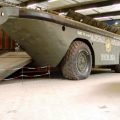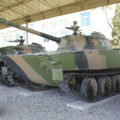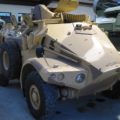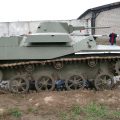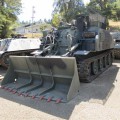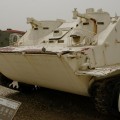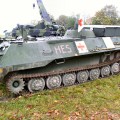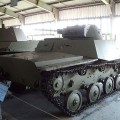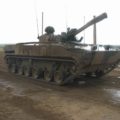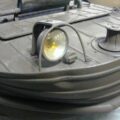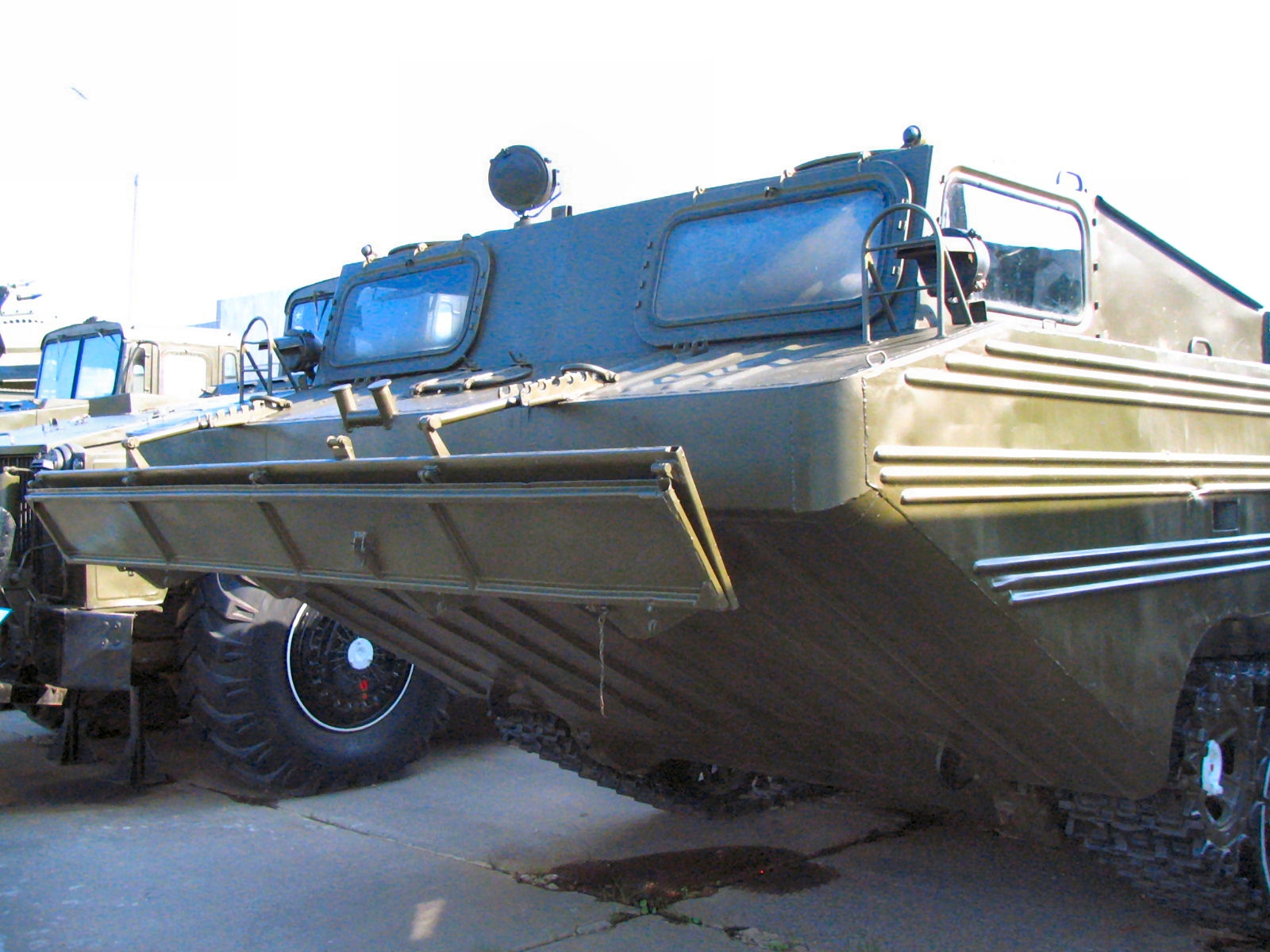
PTS-M jälgitud amfiibtransport | |
|---|---|
| Riik | Nõukogude Liit |
| Tüüp | Jälgitav amfiibtransport |
| Tootmise | algas 1965 |
| Keha stiil | Veekindel kere |
2007 Pts is a Soviet tracked amphibious transport. PTS stands for Plavayushchij Transportyer – Sryednyj or medium amphibious transport vehicle. Its industrial index was Ob’yekt 65. Introduced in 1965, it is large, with a substantial payload of 10 tons, two to four times the capacity of the BAV 485, and better cross-country performance, at the cost of greater somewhat higher purchase costs because it is tracked. The most common model is the improved PTS-M that is powered by a 350 hp diesel engine. It has a boxy, open watertight hull, with six road wheels per side, front drive sprocket, rear idler sprocket, and no return rollers. Like the BAV 485, and unlike the DUKW, it has a rear loading ramp. The crew is seated at the front, leaving the rear of the vehicle open for a vehicle, which can be driven (or backed) in, rather than lifted over the side. To aid in facilitating this, the engine is under the floor. Propulsion in water is by means of twin propellers, in tunnels to protect them from damage during land operations.
| PTS-M jälgitud amfiibtransport | |
|---|---|
| Fotograaf | Carrey |
| Lokaliseerimine | Teadmata |
| Fotod | 18 |
Seotud komplektid:

| PTS-M Walk Around | |
|---|---|
| Fotograafid | Vladimir Jakubov, Carrey |
| Lokaliseerimine | Stalin Line'i muuseum |
| Fotod | 48 |
Leia komplektid eBayst:
Vaata ka:
The PTS-M is a tracked amphibious transport vehicle that was developed by the Soviet Union in the 1960s. It is designed to carry cargo, personnel, and equipment across water and land obstacles. The PTS-M has a waterproofed hull with a front engine, a front drive sprocket, and six road wheels on each side. It can carry up to 10 tons of payload on land and 5 tons on water. It is powered by a V-54P V12 water-cooled diesel engine that produces 350 hp. The PTS-M can reach a maximum speed of 42 km/h on road and 12 km/h on water.
It has a range of 300 km on land and can operate in sea state 4 with special equipment. The PTS-M has a rear loading ramp that allows easy access to the cargo compartment, which can accommodate up to 70 troops, two light utility vehicles, one general utility truck, or an artillery piece up to 152 mm caliber. The PTS-M can also tow a PKP amphibious trailer that can carry another artillery piece up to medium caliber. The PTS-M has a fully enclosed cab that provides protection against chemical or nuclear contamination and seats three crew members. The PTS-M has a winch at the front for loading operations and two propellers at the rear for water propulsion. The PTS-M is an improved version of the original PTS, which had a less powerful engine and a lower payload capacity. The PTS-M was widely used by the Soviet Army and its allies, as well as exported to several countries. The PTS-M was later replaced by the PTS-2, which had a higher payload capacity and a more modern design.

Views : 2193


